A Comprehensive Guide to Everything El Nino
Here at the San Francisco Department of Emergency Management (SFDEM) we’ve been planning for and talking about El Nino for a long time. We wanted to offer you a one-stop-shop of all things El Nino to help you feel more prepared and to assist you in sharing, educating, and empowering those around you with the same intel. We know this is a lot of information, but we hope that it answers some of your questions regarding what may come to be. Above all SFDEM encourages you to do five things:
- Make a Plan
- Gather Emergency Supplies
- Register for AlertSF.org
- Learn the difference between 3-1-1 and 9-1-1
- Follow us on social media
For an in-depth guide please feel free to read away and share this valuable information!
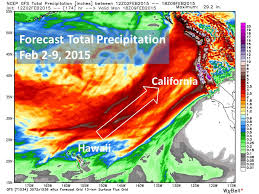
BEFORE
Why do I need to “prepare” for rain? This is ridiculous. Well…we know it might seem that way but rain can do a fair amount of damage. These tips, some easy and some more extensive will help you safeguard your family, your property, and your community.
Emergency Supplies
- We recommend that you prepare your household (including furry friends) for 72-hours. The reality is city services might not be able to reach you until then, so it’s best to have everything you might need stashed away for a 72-hour period.
- Visit SF72.org for directions on how to assemble items already found in your home, into an emergency supplies basket/back-pack/go-bag.
- What does that look like? How can I get started?
- YOU’RE MORE PREPARED THAN YOU THINK folks!
- Examples:
- Water for 72-hours, 1 gallon per person, per day
- Food, non-perishable items
- Flashlights (more than one) with back-up batteries
- First-Aid kit
- Pet food and supplies
- Any prescription medicine you might need
- Good old-fashioned cash
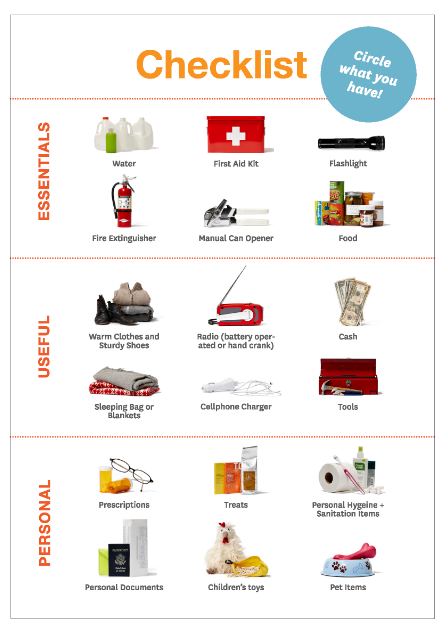
Make a Plan
- This step is really about your family and your community, will Mrs. Smith on the corner who is wheel-chair bound need help during a large storm? Probably. Or what about other at-risk neighbors that are home-bound or disabled? If your house floods, what will you do? Who will you call?

- Make a plan with your family: this will require thinking through what you would do in the event of a large storm. Or what you would do if your home flooded.
- Do you have a family re-unification plan? Do your kids know who to call if they are struck at school? Design a plan that will make everyone feel safe.
- Reconnect with your neighbors, you’d be surprised how many people are home-bound or disabled and might need an extra hand.
- Start thinking about insurance…flood insurance. Most home owners policies do not cover insurance, check in on yours to see if it does.
- Most flood insurance also takes 30-days to go into effect, visit: www.floodsmart.gov/before for tips on how to deal with flood insurance.
The National Flood Insurance Program is available and administered by FEMA.
Learn more about grant assistance for floodwater management here: http://sfwater.org/index.aspx?page=681
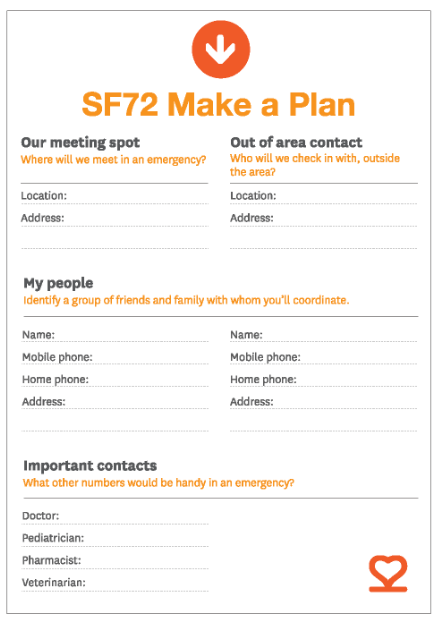
Prepare Your Home & Your Property
- You guessed it, heavy storms can wreak havoc on your property, but there are a few things you can do before to ensure minimal damage.
- Have a professional come by and check your roof and windows for leaks.
- If you have outdoor furniture, tie it down or bring it in.
- Have your gutters cleaned, or replaced if damaged.
- If you have trees on your property, have them trimmed.
- Learn how to turn off your gas and your electrical power.
- Make sure that your smoke detectors and carbon monoxide detectors are ready to go and you have extra batteries.
- Clear out any ditches that you may have.
- Find out if your property is prone to flooding, or in a low-lying area, if it is make sure that you have a flood plan.
Sandbags
- If you find that you live in an area prone to flooding, pick-up free sandbags Monday-Friday, 7 a.m. to 3 p.m., at the Public Works’ operations yard, Marin Street/Kansas Street gate.
- You can also make them on your own with old pillowcases and sand from a hardware store!
- Learn more on Department of Public Works website
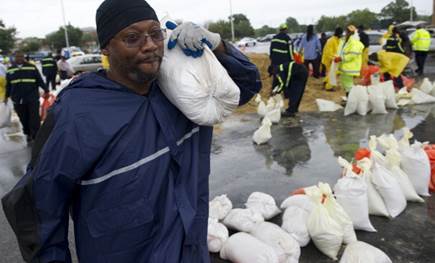
“BE IN THE KNOW”
- Register for AlertSF.org
- AlertSF is our city-wide emergency alert system that notifies people of safety-related incidents via email and text. It takes less than 2 minutes to register, and the information it may provide you one day might be life-saving
- Make sure that your smart phone’s emergency notifications are turned ON to receive emergency alerts
- Know the Difference Between 3-1-1 & 9-1-1
- 3-1-1 is for non-emergencies, like a flooded storm drain
- 9-1-1 is for life-threatening emergencies
- Download the 3-1-1 App
- Downloading this app allows you to make reports via your smartphone rather than dialing in
- Follow Us On Social Media for Updates
- Twitter: @SF_emergency, @SF72org
- Facebook: @SF72org, @SFDEM
- Sign-Up for Weather Alerts
- Alert services are provided by The National Weather Service (NWS), learn more here: http://www.weather.gov/
DURING
Flood Watch = “Be Aware.” – Conditions are right for flooding to occur in your area.
Flood Warning = “Take Action!” – Flooding is either happening or will happen shortly.
Basic Safety Tips
- “Turn around, don’t drown!” Avoid walking or driving through flood waters.
- Just 6 inches of moving water can knock you down, and 2 feet of water can sweep away your vehicle.
- If there is a chance of flash flooding, get to higher ground immediately.
- If floodwaters rise around your car but the water is not moving, abandon the car and move to higher ground. Do not leave the car and enter moving water.
- If water has entered your garage or basement, do not walk through it.
- If you are asked to leave your property, disconnect all electrical appliances.
- Avoid downed power lines, broken gas lines, and downed trees.
- Call 3-1-1 for non-life threatening issues, and call 9-1-1 for life-threatening emergencies.
Finding Information
- Tune into local TV stations or radio stations (740 AM , 810 AM, 740 AM, 106.9 FM)
- Keep your eye on social media as well, follow us on Twitter: @sf72org, @SF_emergency
- Visit our website: SF72.org to find information and view our crisis map exhibiting updated information around the city.
Power Outage Steps
- If your power goes out, the first step is to check your fuse box. Often times the power outage could be limited to your own home and can easily be fixed by resetting your circuit breakers.
- Check to see if your neighbors are also without power, if so report the power outage by calling 1-800-743-5002
- Turn off all electrical appliances and lamps, but we recommend leaving one lamp on so that you can tell when the power has been restored.
- Be sure to keep your refrigerator and your freezer closed.
- Stay far away from sagging or downed power lines, and report them by calling 3-1-1.
- Do not bring a generator inside of your home (if you have one), and be sure to never use candles in case of a fire.
- Never use gas ovens as a source of heat! Or BBQs to cook inside of your home.
Food Safety
- Freeze refrigerated items that you may not be using immediately; leftovers, milk, fresh meat and poultry. This will keep them at a safe temperature longer.
- Purchase/make ice packs and group food together in the freezer to keep it cold longer.
- Be sure the freezer thermometer is at or below 0°F and the refrigerator is at or below 40°F. This will help you monitor if the food is safe. Keep refrigerator/freezer doors closed as much as possible to maintain temperature.
- The refrigerator will keep food cold for about 4 hours if unopened.
- A full freezer will keep temperature for about 48 hours if unopened and 24 hours if half full.
- If food temperature rises above 41°F for 2 hours or more you should discard it. When in doubt, throw it out!
Human Waste Disposal
- If water is cut off, but the sewer lines are unaffected you can flush your home toilet by adding water manually to the tank. This water doesn’t need to be drinking water quality.
- If sewer lines are broken, but toilets are reusable you can line your toilet with plastic bags.
- If toilets are not reusable you can use a 5-gallon bucket with a lined plastic bag as a substitute.
- If you’re near general public toilets and the sanitary sewer system is still functioning there, a visit to one of these locations is also an alternative.
- Examples:
- Schools, community centers, and/or public buildings.
AFTER
Check on elderly, homebound, or disabled neighbors.
Beware of Hazards
- Avoid direct contact with flood water, it may be contaminated. Wear heavy clothing and gloves to avoid contact.
- Do not eat fresh or canned foods that have come into contact with flood water.
- Flooded buildings or homes should be pumped out, disinfected and dried ASAP to prevent mold.
- Do not handle live electrical equipment in wet areas, and call to have them checked before.
- Check for any remaining damage from the storm such as: loose power lines, damaged gas lines, foundation cracks, collapsed porches or overhangs, unstable trees and downed trees.
- If you smell gas or a hissing noise immediately call 9-1-1 and PG&E at 1-800-743-5000
- Keep children and pets away from floodwater, which may be contaminated or contain unknown objects.
- If you come into contact with floodwater make sure that your tetanus immunizations are up to date.
- If you have flood insurance, file a claim as soon as possible.
Clean-up
- Wear protective clothing, including rubber boots, gloves, and a hat.
- Prevent mold by drying out building interior with fans and dehumidifiers and removing wet items immediately. Wet carpet, furniture, bedding, and any other permeable items may develop mold within 24-48 hours. For more information to report a mold complaint please call 311 or visit: https://www.sfdph.org/dph/EH/Complaints2EH/default.asp
- You can also download and use the 3-1-1 app to file reports/ask for assistance
- Clean any impervious surfaces, including the refrigerator and freezer, with soap and disinfect with a 10% household bleach solution (1 cup of bleach per 1 gallon of water). Do not mix cleaning solutions together (especially bleach with other products that contain ammonia) because they could produce irritating or potentially toxic gases.
- Beware of animals that may have entered your garage or basement with the flood waters.
- Be aware of potential chemical hazards during floods. Flood waters may have moved hazardous chemical containers, solvents, or other industrial chemicals from their normal storage places
- If you need to hire a water and/or mold remediation company be a wise consumer. Be sure to do the following: check references, check their reputation, check to see that they are certified, get estimates and compare, ask if they have liability insurance, ask for a service guarantee, check the full extent of the service.
Winter may be coming, but it won’t be so bad if you prepare your family and your property. Take good care, and remember that we are here 24/7 monitoring the weather and working with our partner agencies and utility companies to ensure a safe winter.
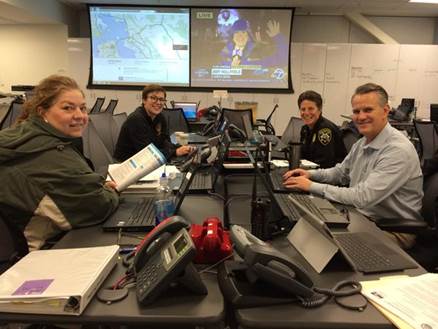
If you need help getting started on gathering your emergency supplies or making a family plan please visit: SF72.org
Additional Resources & Information:
http://emergency.cdc.gov/disasters/floods/
http://www.redcross.org/prepare/disaster/flood
http://www.sfdpw.org/index.aspx?page=1810
http://pge.com/en/safety/preparedness/index.page
http://pge.com/includes/docs/pdfs/about/newsroom/WSKCustomerStormPreparationTips.pdf
http://cert.io/10-home-improvements-tips-before-el-nino/
https://www.youtube.com/watch?v=_Tuou_QcgxI
http://www.lacounty.gov/elnino
http://www.abag.ca.gov/bayarea_info/weather.html
You can sign up for those alerts at www.sf72.org and www.AlertSF.org.